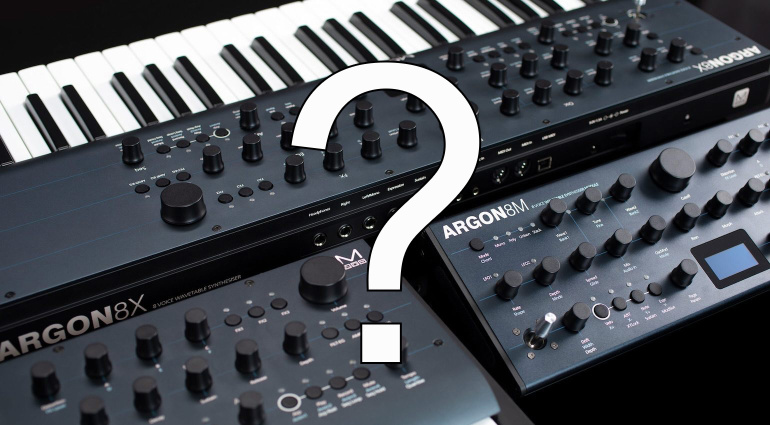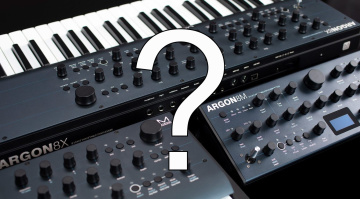Confused about synthesizers and synthesis? This beginner’s guide to the many different types of synthesizers will sort you right out.
I’m sorry. We’re sorry. Sometimes we forget that not everyone is a synthesizer expert. Nor should you have to be. Someone taking their first step into the world of synths is just as deserving of joy and excitement as the most battle-hardened synthesizer veteran.
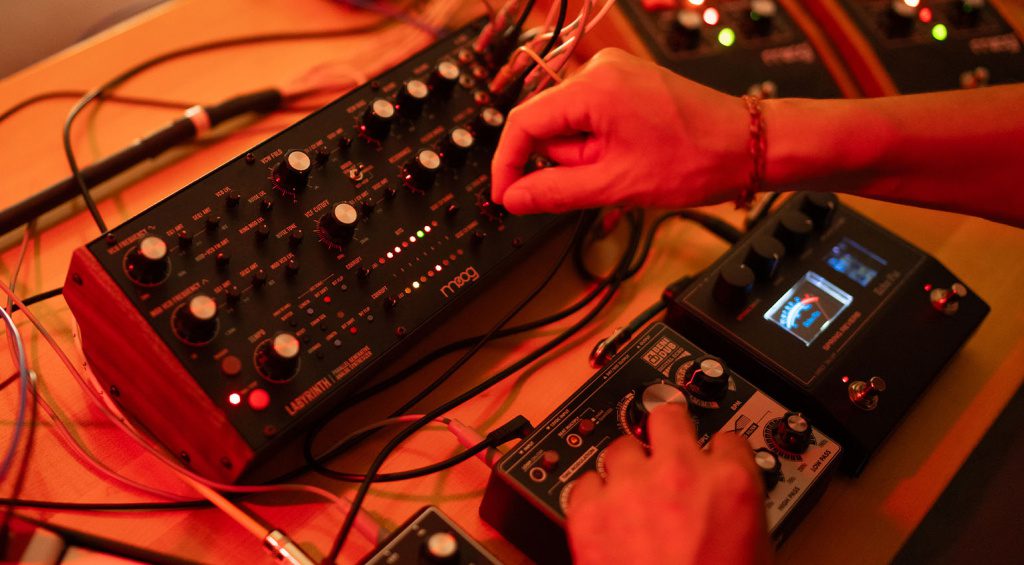
Synths can be confusing, right? There are so many different types of synthesizers. What’s analog subtractive and how is that different from East Coast – or is it actually the same thing? And what about FM, or wavetable, or virtual analog? And for God’s sake, what’s a ROMpler?
To help get you up to speed, here’s a handy guide to the different types of synthesizers you may find when browsing through an online site like Thomann*. The terminology here works for both hardware and software synths, so the latest Cherry Audio soft synth is just as applicable as, say, a Moog Muse.
Ready to dive into the different types of synthesizers? Let’s get started.
Types of Synthesizers: Analog Vs. Digital
Before we get into actual terminology, I want to address the issue of analog and digital. Analog synths traditionally generate sound with electronics while digital ones do it with code, ones and zeroes. Accordingly, a hardware synthesizer can be either analog or digital while a soft synth, a piece of software, can only ever be digital.
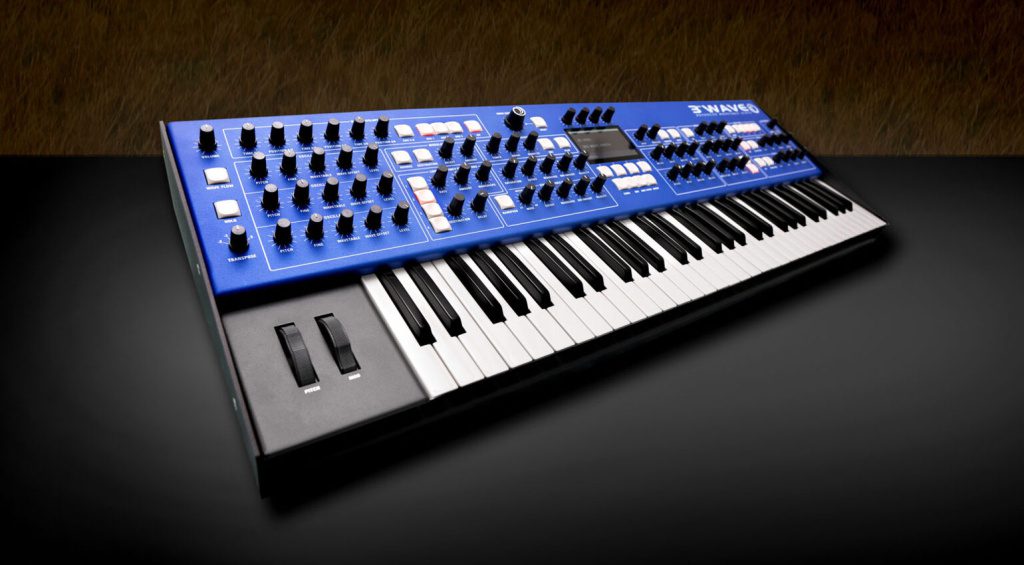
Where it gets confusing is that many modern hardware synths are hybrid analog and digital. You may have a digital oscillator paired with an analog filter, or analog oscillator and filter but digital modulation.
To further muddy the waters, these days it’s common for plugin developers to talk about their instrument having “analog sound.” What they mean is their soft synth has a warm, hardware-like sound – as opposed to a purely digital and “cold” sound.
Types of Synthesizers: Subtractive Synthesis
The most traditional form of synthesis is subtractive. Think Moog Minimoog, Roland Juno-60 or Clavia Nord Lead. These start with harmonically rich oscillators (the part that generates the sound). The player then shapes the sound by removing harmonics with filters and amplitude (volume) with envelope generators. Hence subtractive.
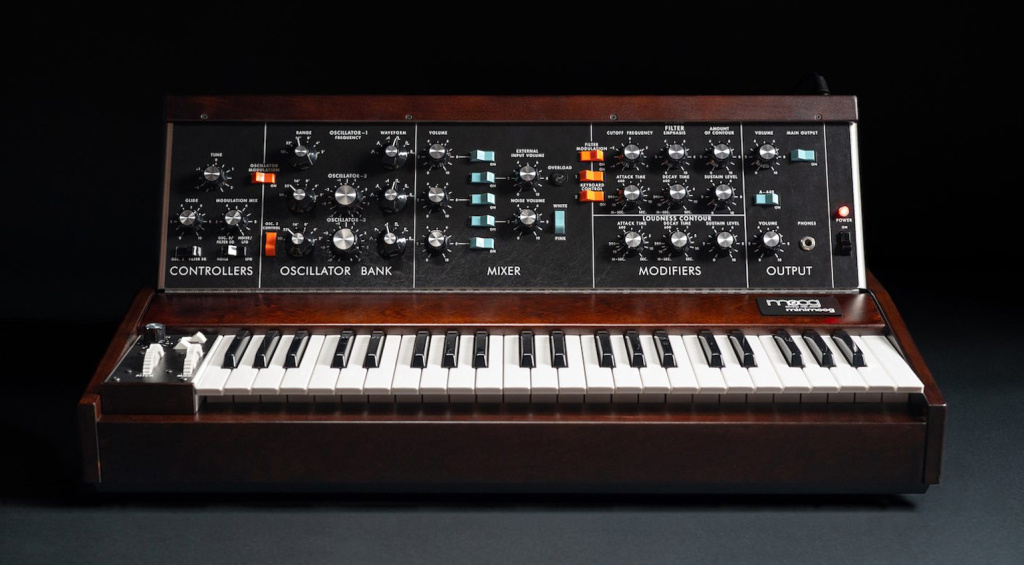
Think of it like a sculptor starting with a block of marble. By removing bits here and there, she can create a radically new shape. Subtractive is the same, just with sound instead of stone.
Subtractive can be analog, as with the Moog Minimoog, or digital, like the Clavia Nord Lead AI. When subtractive is digital, we can also call it virtual analog.
Types of Synthesizers: East Coast Vs. West Coast
East Coast synthesis is another term for subtractive synthesis and can refer to a hardware analog synth or a virtual analog one. The name comes from the place where this type of synthesis was first developed, that being the East Coast of America (New York to be precise) in the 1960s by Bob Moog. Additionally, we can talk about East Coast synthesis using traditional Western musical harmonies and a piano-style keyboard.
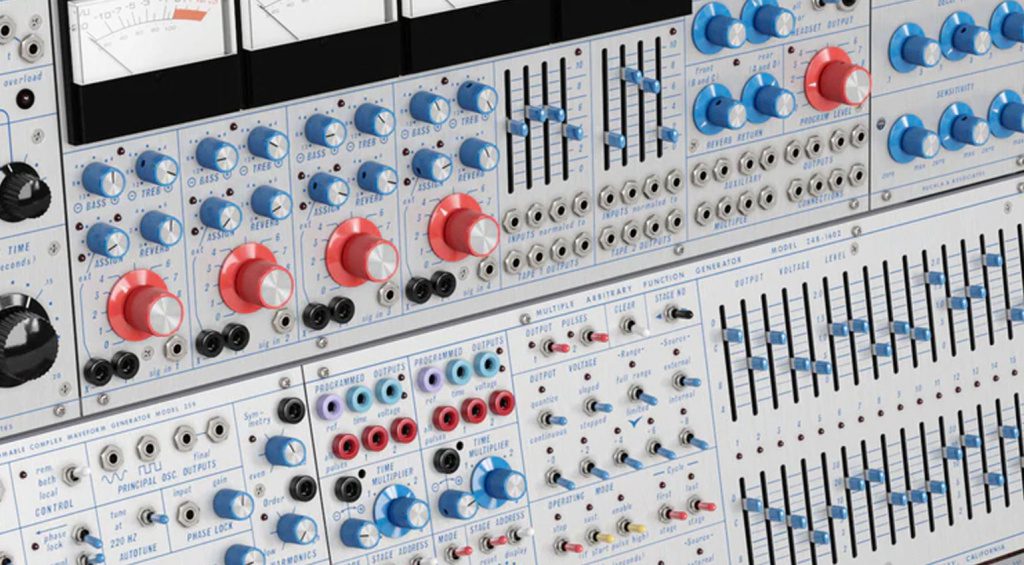
West Coast, on the other hand, came out of the work of Don Buchla and the San Francisco Tape Music Center (hence West Coast) around the same time that Moog was making his synths. Rather than subtract from a harmonically rich oscillator, West Coast synthesis starts with harmonically light waves (sines and triangles) and adds complexity with frequency modulation and wavefolding. Rather than a filter, West Coast prefers the lowpass gate, a combination filter and envelope. It also favors experimentation, often with less of an insistence on Western scales.
West Coast synths remain fringe but are growing in popularity. Check out the Cre8audio West Pest or Tiptop Audio’s Eurorack-format Buchla modules for a hardware fix, and Arturia’s Buchla Easel V for a software one.
Types of Synthesizers: Wavetable Synthesis
Wavetable synthesis started as a rather esoteric branch of digital synthesis in the early 1980s with the PPG Wave. In the last 10 years thanks to the popularity of Native Instruments’ Massive, wavetable has grown to be one of the most popular types of synthesizers.
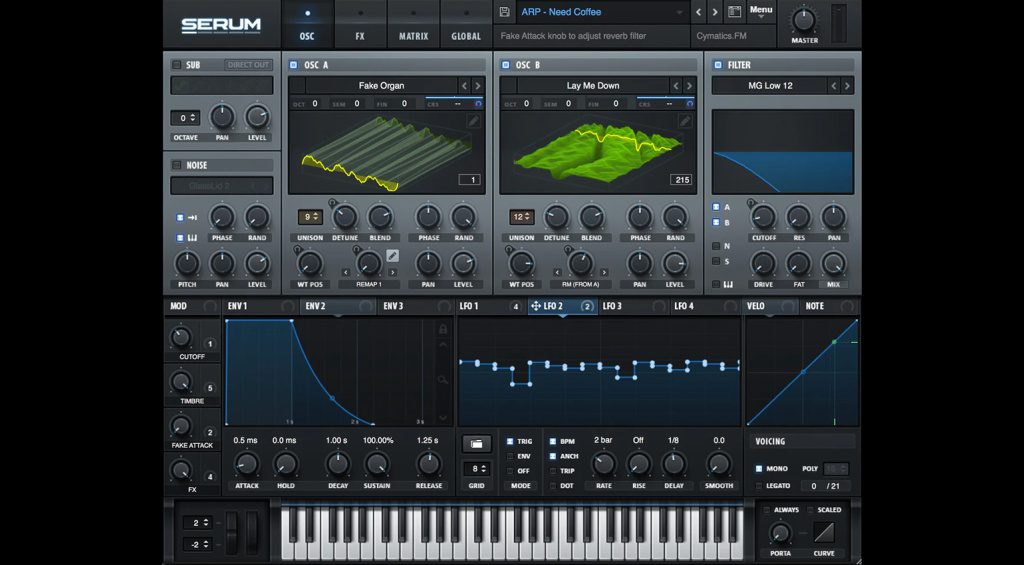
What separates wavetable from virtual analog is the oscillator section. Wavetable replaces the usual waveform-generating oscillator with special samples called wavetables. Rather than a single recording of a sound, a wavetable includes multiple samples of the same source, all slightly different. Rather than play just one at a time, you can scan across them. It’s this movement between individual samples that gives wavetable its distinct timbre.
Wavetable synths worth looking into include Groove Synthesis’ 3rd Wave, Modal Electronics’ CraftSynth 2.0 and Xfer Records’ Serum.
Types of Synthesizers: FM (Frequency Modulation) Synthesis
When most people think of digital synthesizers, they’re probably imagining FM. Clean tones, glassy pads and rough basses – these are what FM does best. Discovered by John Chowning in the 1970s and made famous by Yamaha with its DX7, FM, which stands for Frequency Modulation, uses arrays of digital oscillators modulating each other. Originally, these oscillators (called operators) could only output sine waves but nowadays there are all kinds of wave shapes possible.
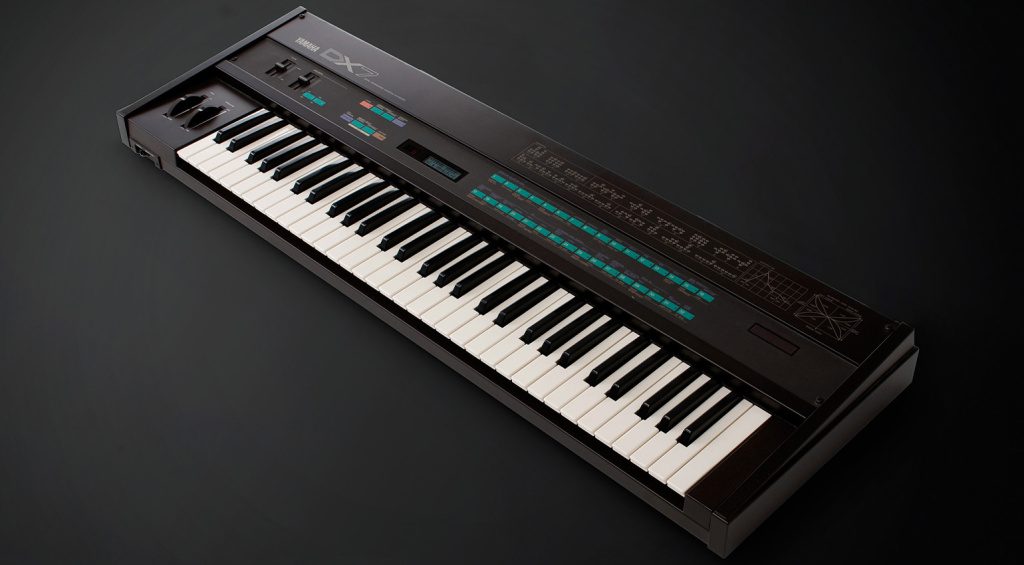
FM synthesis is considered to be difficult to master as it behaves very differently from subtractive synthesis. Traditionally, there’s no filter. Sound shaping is all about mathematical relationships between the frequencies of oscillators. However, modern FM synths often include filters as well.
Popular FM synths on the market now include Korg’s Volca FM and opsix series plus Arturia’s DX7 V, a software version of Yamaha’s 1980s phenomenon.
Types of Synthesizers: Physical Modeling Synthesis
Physical modeling is another kind of digital synthesis, one that uses mathematical models to simulate the sound of acoustic objects. These can be musical instruments like pianos or marimbas or wholly imagined ones.
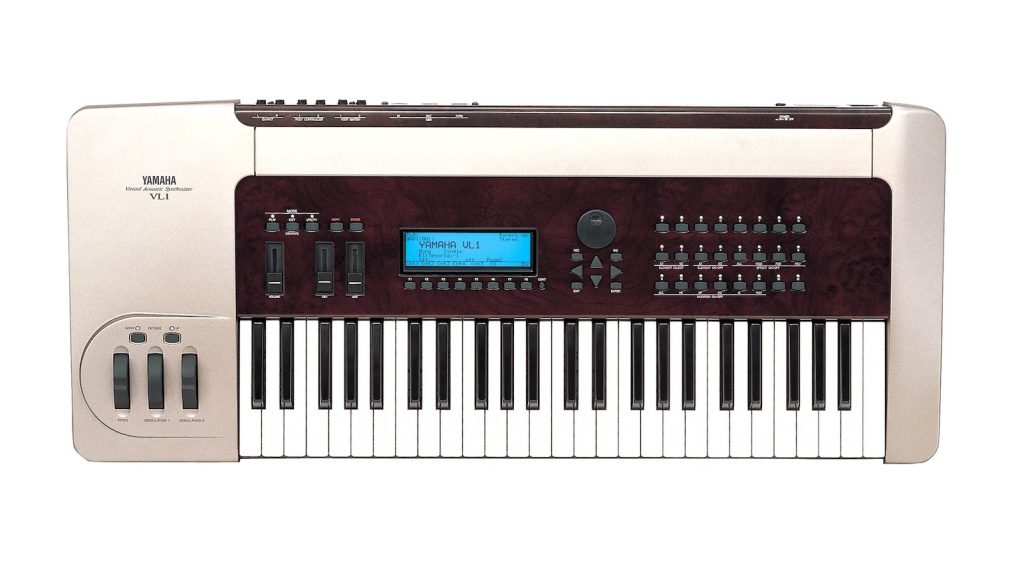
Physical modeling was first marketed in the early 1990s with synthesizers like the Yamaha VL1. They were often expensive and hard to program so were not very popular. However, thanks to an increase in computer processing power they’re making something of a comeback, particularly as soft synths.
Physical modeling synthesis can be found in the Arturia MiniFreak and MicroFreak, Expressive E Osmose and Baby Audio Atoms.
Types of Synthesizers: Sample Synthesis
For many decades, the ultimate goal of synthesis was realism. Remember that analog synths used to ship with tuba and flute presets. In the 1980s with the rise of sampling, synth manufacturers realized that they could combine sample player oscillators with subtractive-style signal processing, resulting in phenomenally popular instruments like the Roland D-50 and Korg M1.

Having samples as the sound source means that any kind of sound is possible, not just realistic ones. It’s just as easy to load an instrument full of rave sounds as it is pianos and violins. This is how the ROMpler was born. Essentially sample packs with limited synthesis control, they were incredibly popular in the 1990s and 2000s – and still exist today in software form.
Another sample-based synthesis type you may see is granular. As the name suggests, granular uses tiny grains of sound as its basis, pulling them from samples in a variety of ways. It tends towards the more experimental and ambient and is often an extra feature in a synth rather than the main show, as in Spectrasonics’ Omnisphere, although granular synthesizers do definitely exist, such as the Tasty Chips Electronics GR-1 and GR-Mega.
Types of Synthesizers: Additive Synthesis
Probably the most “digital” of the many forms of digital synthesis, additive combines sine wave partials to create new sounds. The more partials you have to work with, the more realistic the resulting sound.
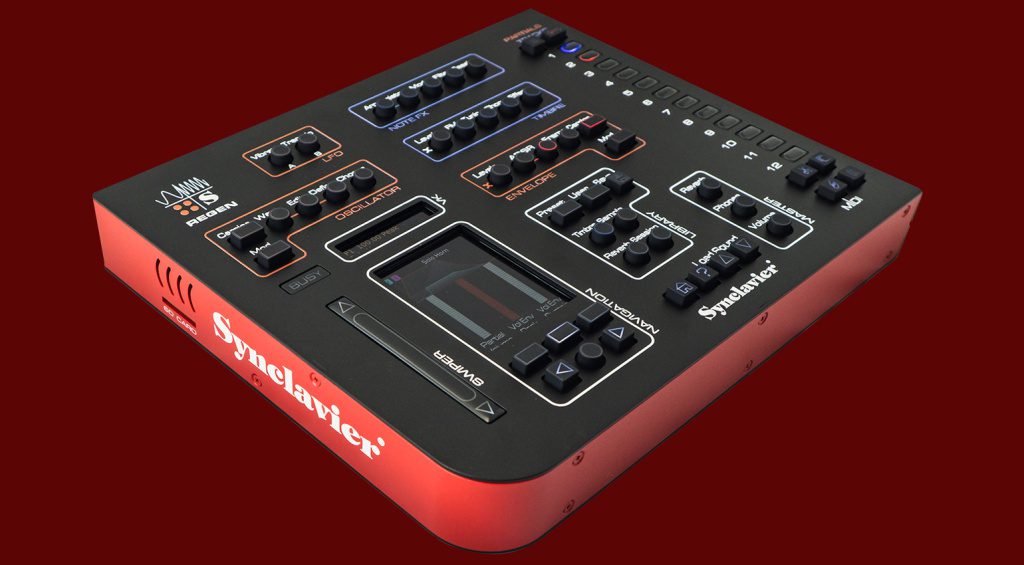
Although powerful, additive remains a relatively obscure type of synthesis. Hear it in action in Synclavier Regen, Razor by Native Instruments and Pigments by Arturia.

